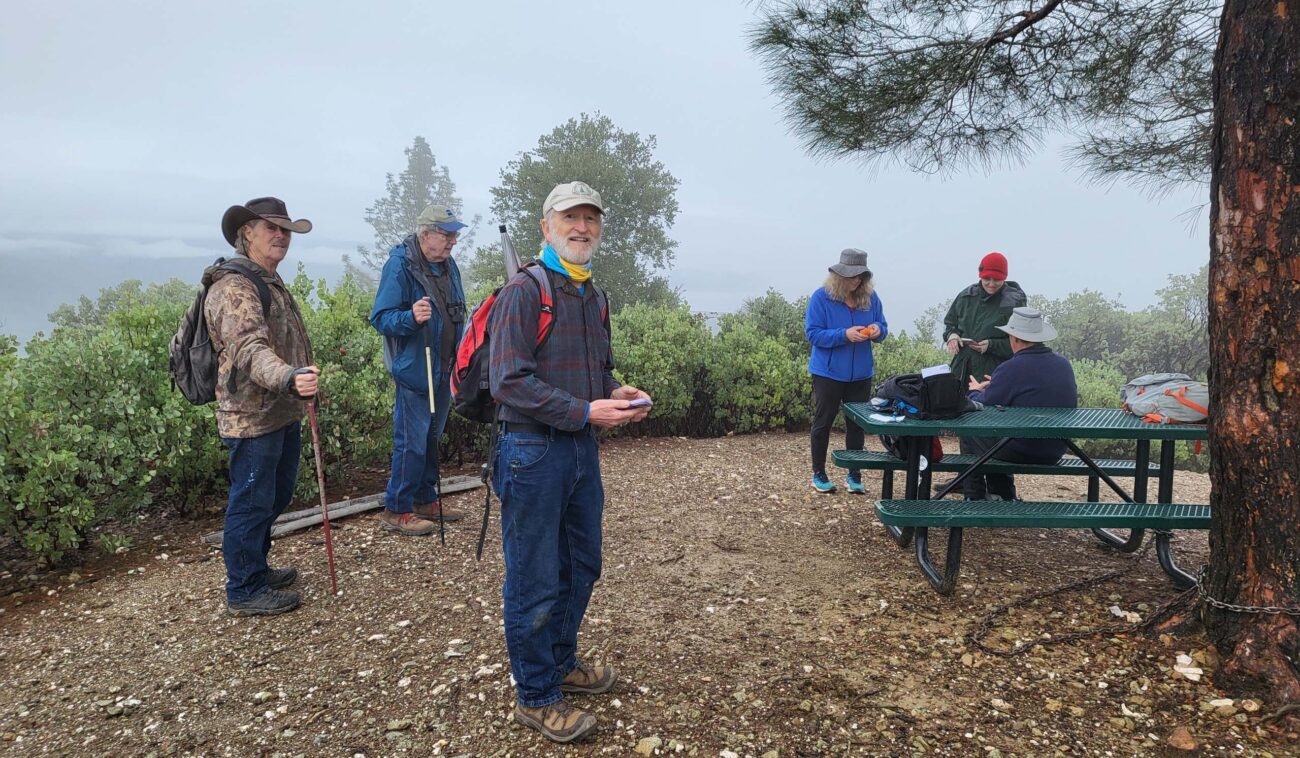
This trail to Chamise Peak, near Shasta Lake and above the Sacramento River, provides a look at mixed conifer, oak woodland, and chaparral habitats over a 2.3-mile gentle climb of 700 feet. The originally scheduled field trip was postponed one day due to rain. Despite the last-minute date change, we had a cheerful group of nine hikers who made it to the top of the peak.
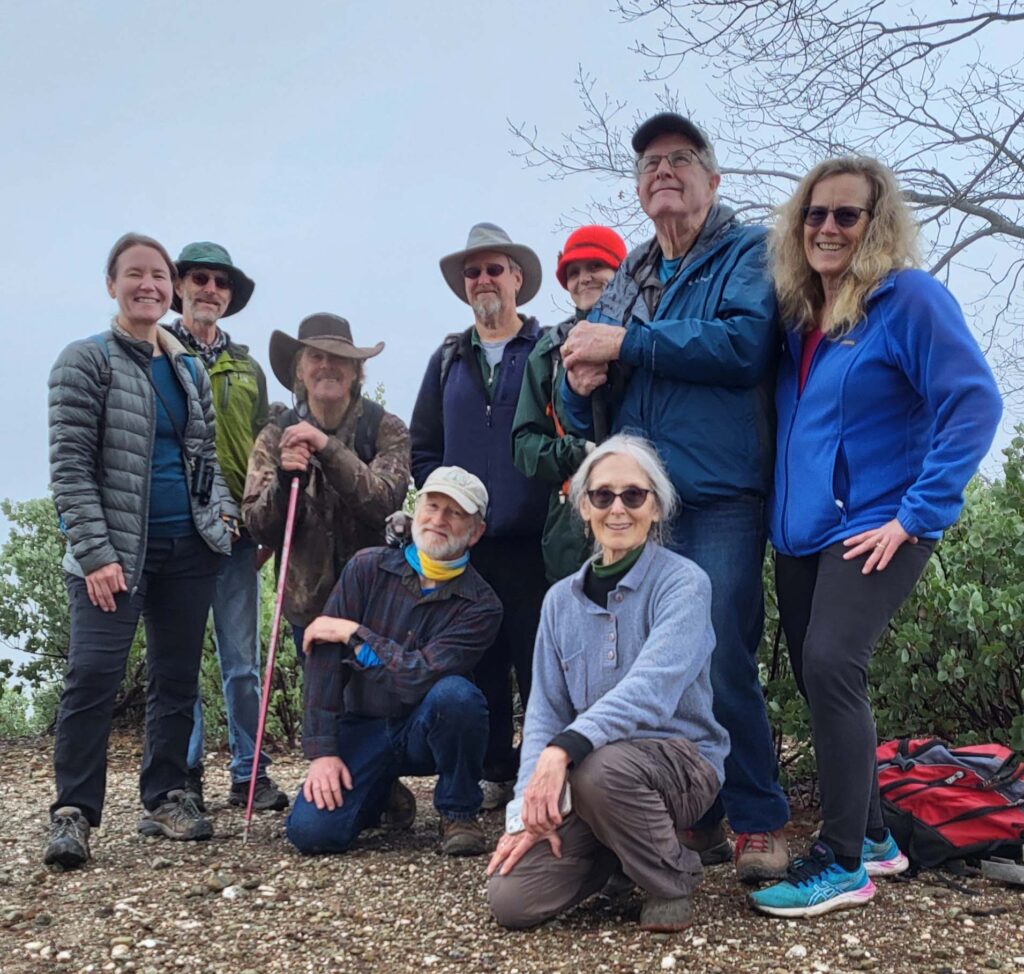
The cloud cover began to lift after we reached the top and we could make out Shasta Dam and the Sacramento River, but not Mt. Shasta.
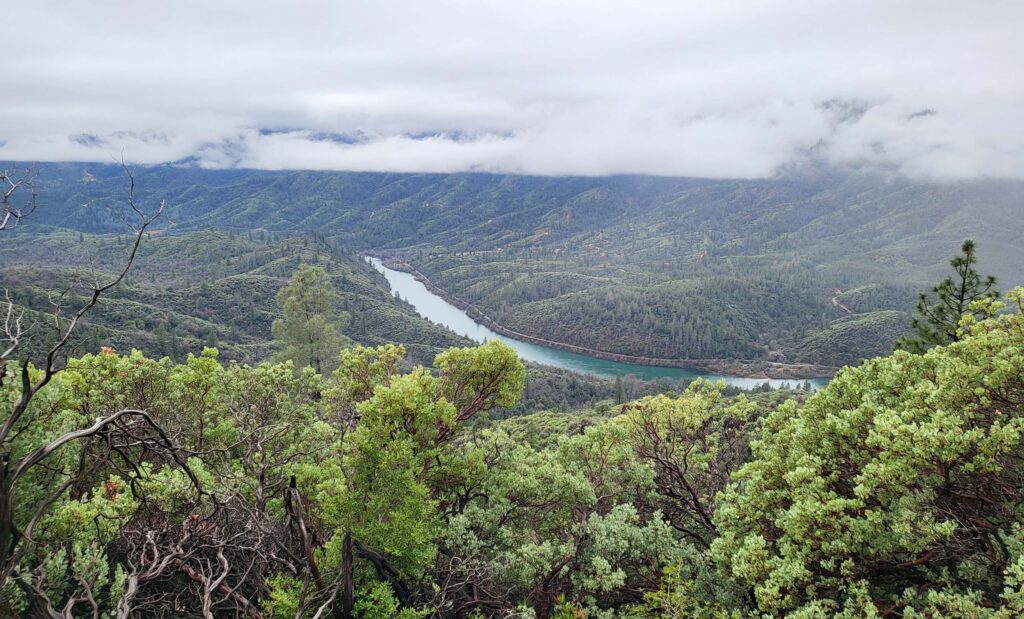
The most common conifer on the trail is knobcone pine, interspersed with a few gray pines and ponderosa pines near the top. Black, blue, and canyon live oaks are the most common broadleaf trees. For shrubs, white-leaved manzanita was the most common, many 20 feet tall (quite tall for this species). Other shrubs included coffeeberry, Lemmon’s ceanothus, deer brush, redberry, keckiella (most likely Lemmon’s), and, of course, toyon.
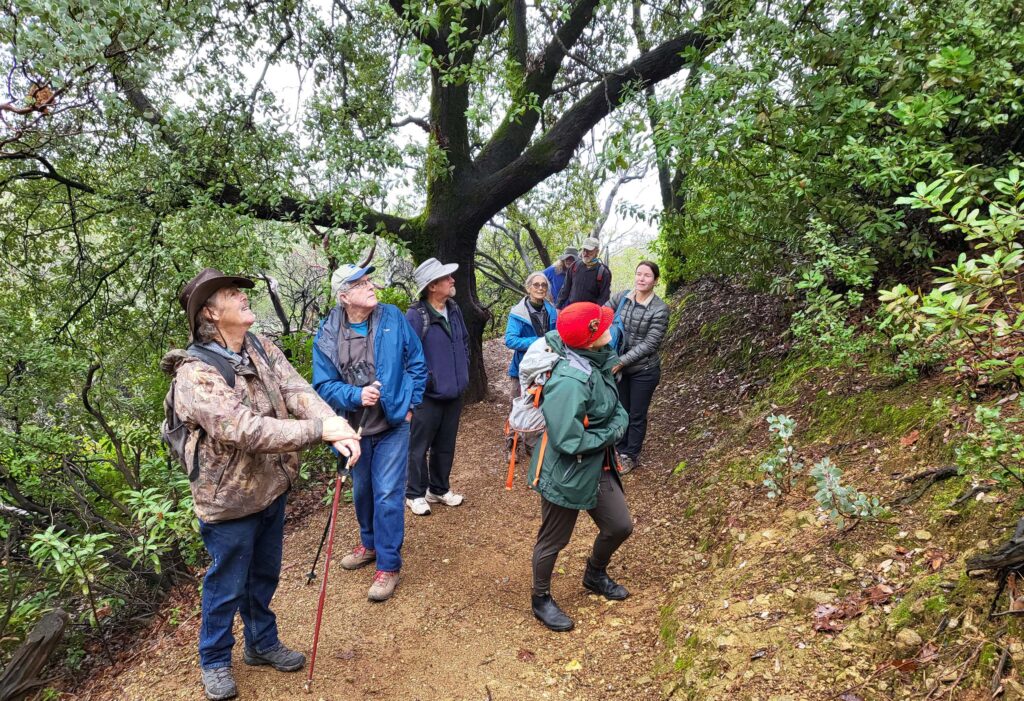
One interesting herbaceous plant we saw in bloom was a penstemon underneath the powerlines. Most of the Lemmon’s ceanothus and cudweed were also growing under the powerlines.
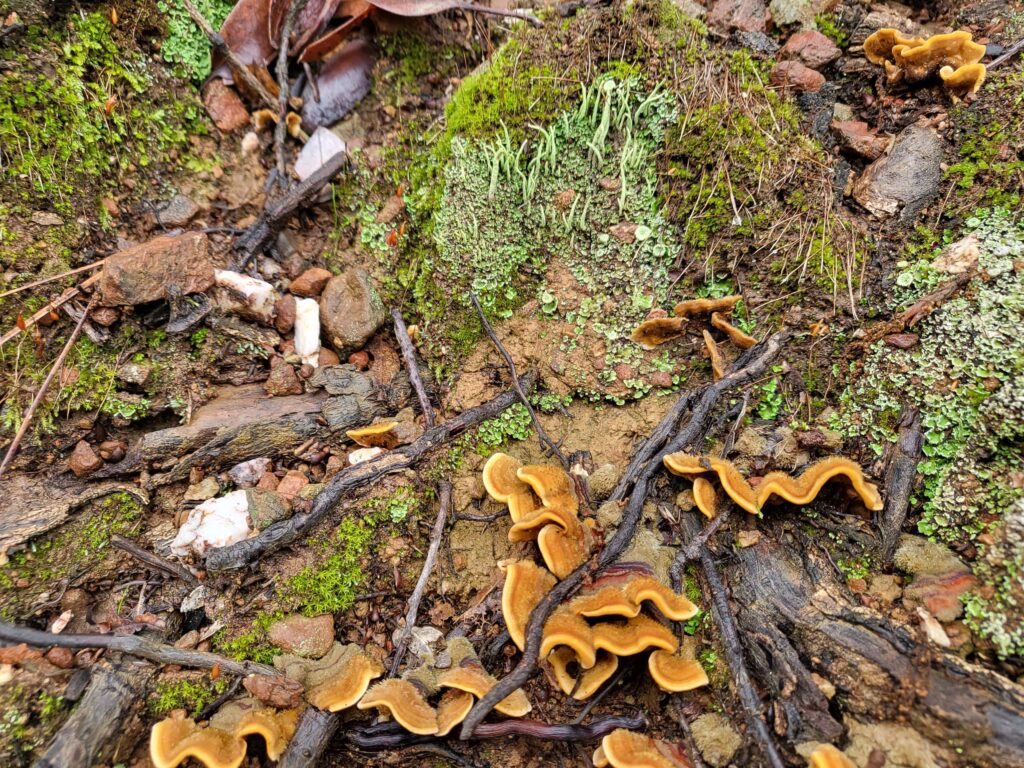
As to why there are no chamise shrubs on Chamise Peak, one can only speculate. We can assume that chamise did grow there at one time, due to the peak’s name and the fact that it grows just about a mile to the north, next to the road to Shasta Dam. It is possible that it was killed off by pollution from copper smelters 100 years ago.
Because chamise thrives in full, hot sun, it can outcompete other shrubs and trees after a fire removes the overstory vegetation. Chamise can then form dense stands that crowd out all other vegetation. Under today’s conditions, Chamise Peak is shaded by black oaks, canyon live oaks, and tall white-leaved manzanitas, making it unlikely that chamise will recolonize its namesake peak—at least until the next major fire comes through.
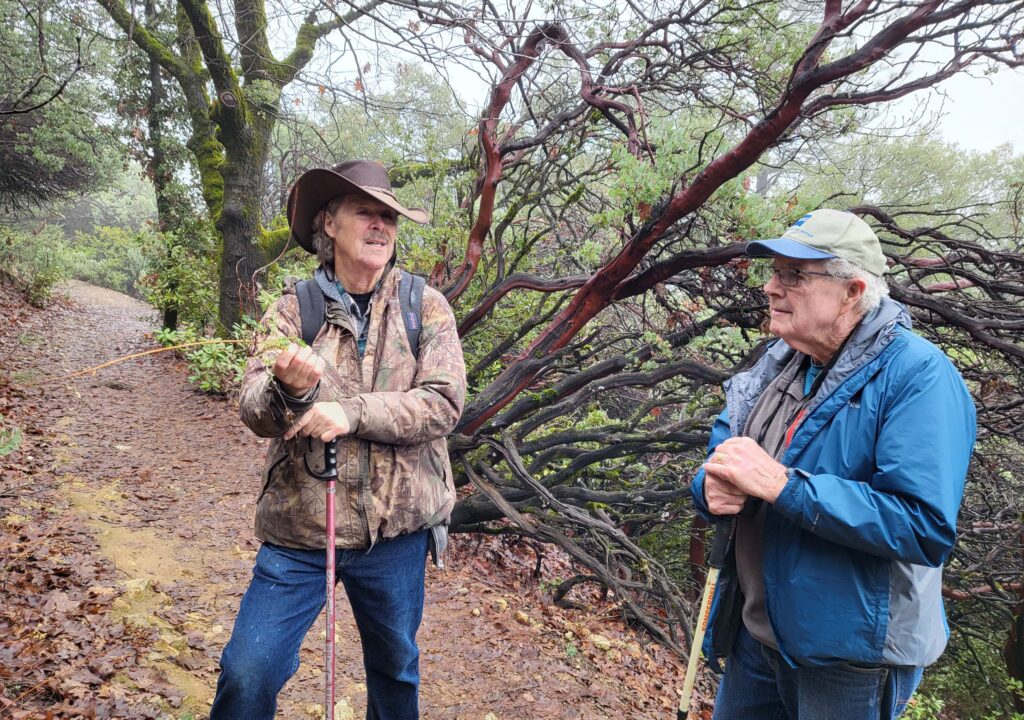
Next time you drive back to Redding from Weaverville on Highway 299, look at the tall hills to the north near Whiskeytown Lake. Most of this is solid chamise.
Chamise Peak Trail is a great place to take a hike, but it is best on the weekdays as it is fairly busy on weekends. ~David Ledger
